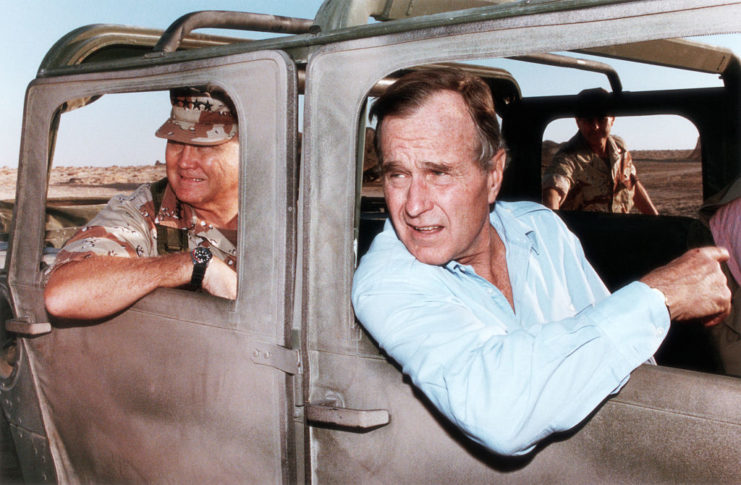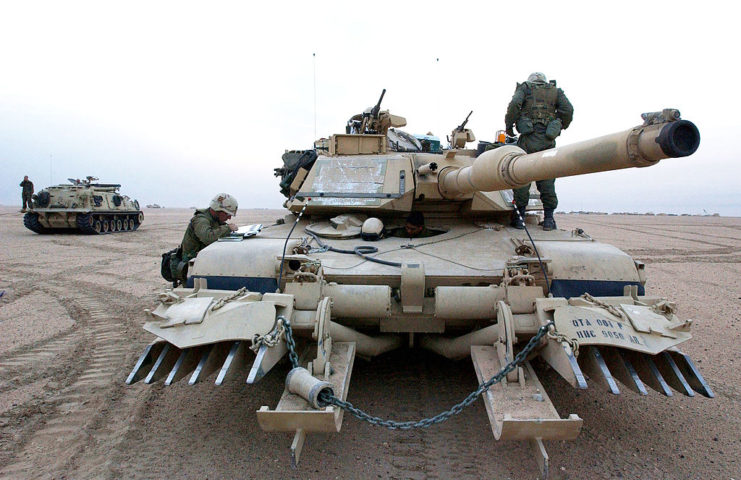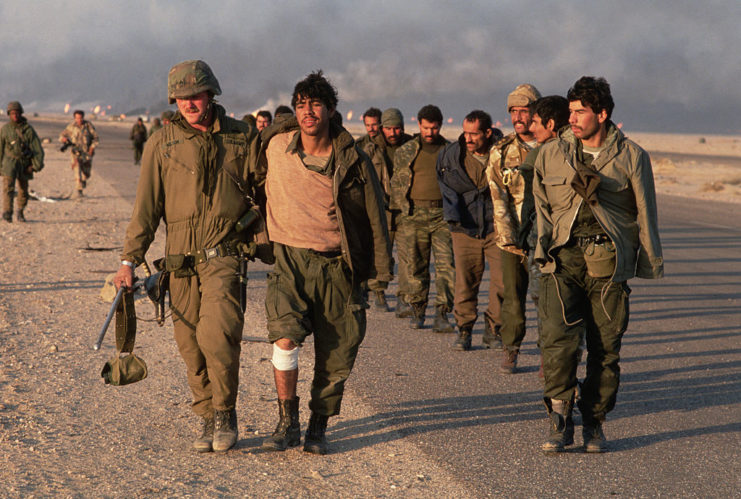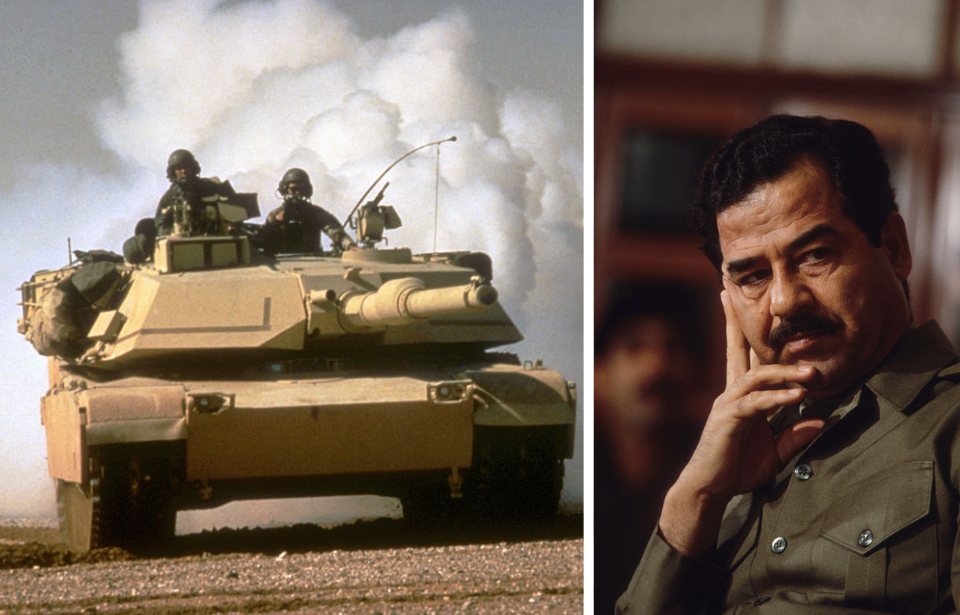During the Gulf War, Iraqi leader Saddam Hussein used surprising tactics to fend off coalition forces. One idea, in particular, stands out as exceptionally outlandish and poorly planned.
Most modern militaries would never use a Civil War-era cannon against a nuclear missile, or a Douglas SBD Dauntless against a B-2 Spirit stealth bomber. But Hussein decided to use a World War I era tactic to defend Kuwait. Hussein overlooked one tiny detail in his disastrous plan: just because you use outdated defenses doesn’t mean that the enemy also has to use outdated tactics.
The First Gulf War
In 1990, Iraq’s leader Saddam Hussein invaded neighboring Kuwait – a small country with rich oil deposits – and the United States was thrust into an international crisis. In response, US President George H. W. Bush formed an international coalition made up of NATO allies and Middle Eastern countries opposed to the invasion.

The conflict came to a head in January 1991. The US coalition launched an extensive air campaign against Iraq, followed by Operation Desert Storm – a 100-hour land war that finally removed Iraqi forces from Kuwait.
The war on the ground was intense and progressed quickly. Hours before the offensive attack even began, reconnaissance teams were already deep behind enemy lines gathering intelligence. Hussein had his own tactics prepared for the war, one of which would have drastically changed the course of the conflict – and possibly the outcome of the war.
The Saddam Line tried to mimic WWI trench warfare
Dubbed the “Saddam Line,” Hussein’s plan involved the construction of a massive network of fortifications booby-trapped with trenches as his first line of defense against the advancing coalition forces. Roughly 70 miles of anti-tank trenches, ditches, barbed wire, and even pits filled with oil ready to be ignited were set to greet the Americans and possibly trigger a battle inside the trenches similar to the warfare used in World War I.

What was supposed to be an impenetrable defense tactic turned out to be nothing more than a bump in the road for coalition forces. Coalition troops arrived at the Saddam Line around 4 am, and by 6:45 they had broken the line and were headed deep inside Kuwait territory.
While Iraq assumed that the Americans would have to clear each trench man by man, the US 1st Infantry Division instead used minesweeping plows mounted on tanks to tear through the obstacles. The tactic became known as the “bulldozer assault.” The Americans suffered zero casualties in the battle, while countless Iraqi soldiers were buried alive as the tanks plowed through the trenches.
Was the treatment of Iraqi soldiers ethical?
Col. Anthony Moreno, the commander of the brigade that led the assault, recalled the scene after the tanks had rolled through in an interview with the Seattle Times: “For all I know, we could have killed thousands. I came through right after the lead company. What you saw was a bunch of buried trenches with peoples’ arms and things sticking out of them.”
The treatment of Iraqi soldiers during the Saddam Line attack has become a source of controversy among other US servicemen and civilians alike. Many people have expressed outrage at the lack of dignity shown to those Iraqis in the 70 miles of trenches. It’s believed that 2,000 of the 8,000 defenders surrendered as they watched their comrades mowed down.

Others believe that the treatment of Iraqi soldiers was justified. Marine Corps officer William H. Weber IV explained in The Washington Post, “Within the context of a war to defend interests vital to our country, killing an actively hostile enemy is a tactical necessity.”
More from us: The US Army Air Forces Accidentally Dropped Bombs on Boise City, Oklahoma
“I know burying people like that sounds pretty nasty,” Col. Lon Maggart told the Seattle Times, “but it would be even nastier if we had to put our troops in the trenches and clean them out with bayonets.”
